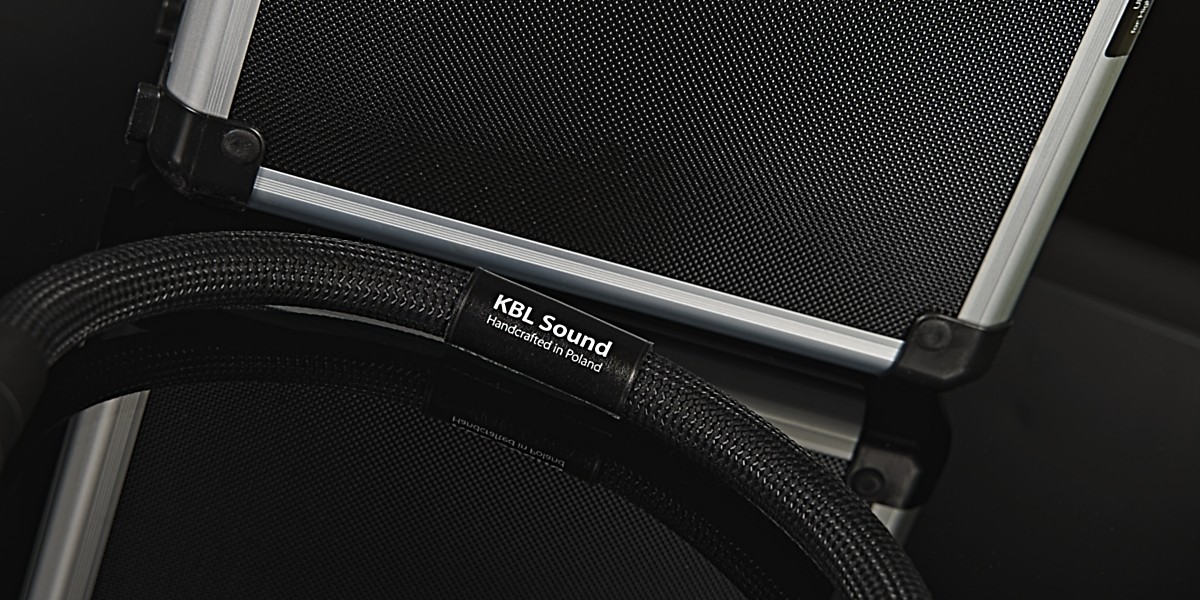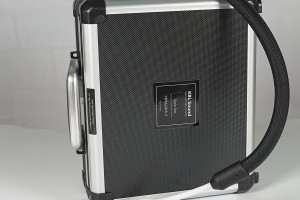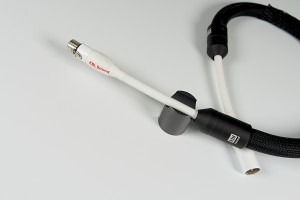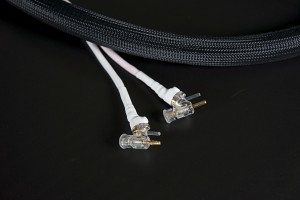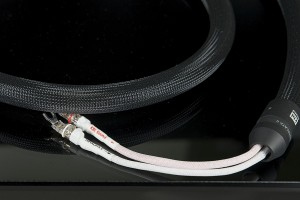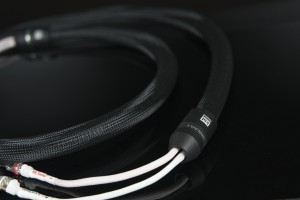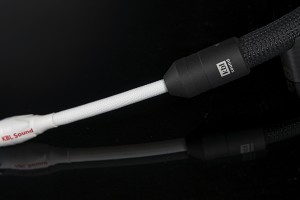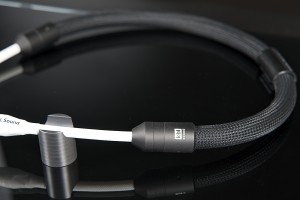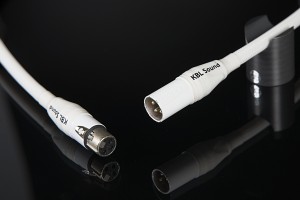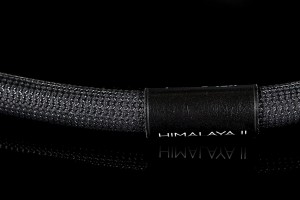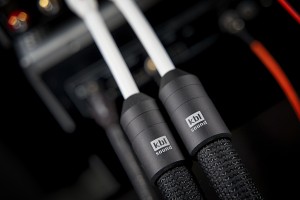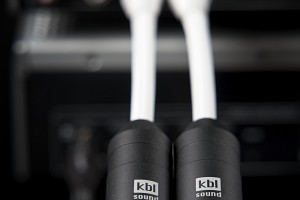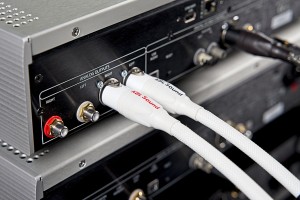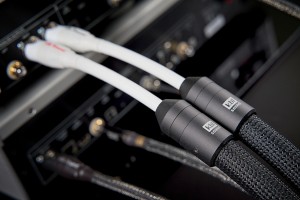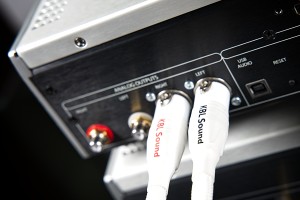Himalaya II is the new version of the highly acclaimed (until recently) top line of analog cables by KBL Sound. For this test, I received a set consisting of a KBL Sound Himalaya II XLR interconnect and a speaker cable from the same series. Both were accompanied by the latest addition to the brand’s portfolio, Extreme power cable, even though it wasn’t a subject of this review.
Introduction
It’s been a while since I reviewed KBL Sound Red Corona cables (in 2019, to be exact). It wasn’t the top line back then, as this position was already occupied by the Himalaya series. It replaced the Red Eye line and despite being only 10% more expensive it offered significant progress in terms of sound quality compared to the predecessor. It proved to offer an impressive performance and one that satisfied my personal taste as well.
Since then, Himalaya II has taken over the top spot in the lineup, at least as far as analog signal cables are concerned, as the digital and power cables evolved into separate lines and the top power chords are part of the TriKord Power® (including one called Himalaya PRO II). The latest addition to this Polish manufacturer’s offer is the Extrema power cable that I reviewed already for HighFidelity.pl and found to be excellent. For the aforementioned test I had three Extremas at my disposal, and one of them (only temporarily, unfortunately) stayed with me so that I could use it in my setup for this review as well.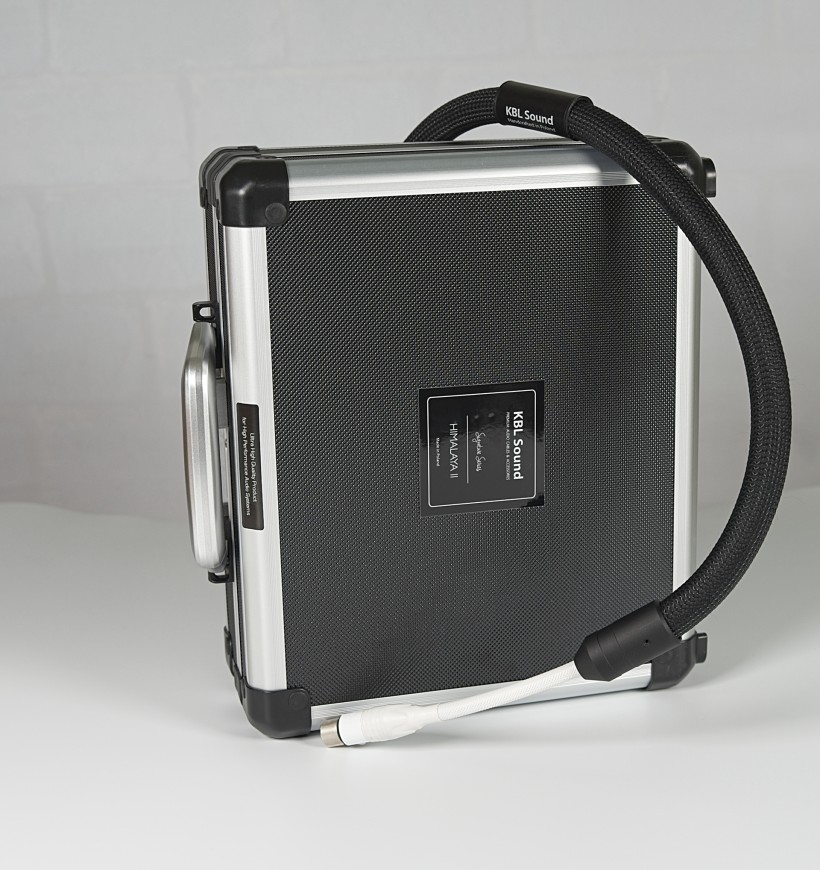
Before we move forward let me explain a peculiar situation I found myself in when preparing this test. When I started reviewing the Himalaya II interconnect it was the top of the line but before I finished KBL Sound introduced Extrema analog interconnects at the Audio Video Show in Warsaw. I missed the premiere due to illness but since I had a chance to listen to one of the earlier prototypes I am pretty sure it takes the performance to yet another, even higher level. In other words, I reviewed Himalaya II XLR as the top of the line for most of the time but it doesn’t occupy this position in KBL Sound’s lineup anymore, at least the interconnect doesn’t. When you’re reading this review both Extrema power and analog interconnects are the best KBL Sound has to offer. Himalaya II, however, at least for now, is still the top speaker cable. OK, let’s get to it.
Design and features
Himalaya II XLR analog interconnect features conductors made of pure monocrystalline silver obtained in the OCC (Ohno Continuous Casting) process. The latter, according to the manufacturer, ensures a higher conductivity (6% gain compared to both, OCC copper, and „regular” silver conductors). We don’t know exactly the geometry of this model, as the Polish manufacturer is not one to share all the details with those who would like to copy their designs, which is understandable.
Those who know other KBL Sound cables know, that the brand consistently uses air as the dielectric in its cables, as it firmly believes it is the best one. The conductors are placed in Teflon tubes filled with air in such a way, that they barely (the manufacturer says it’s only „a few percent” of the total surface) touch the tube, and thus the losses resulting from contact with the insulator are completely negligible.
The Teflon tube acts also as a mechanical barrier protecting the cable against vibrations caused by the current flowing through the conductors. Several layers of shielding and vibration-damping materials complete the design together with top-quality plugs. The latter for the RCA version comes from WBT, and these are Nextgen Signature ones, and for XLR these are Neutrik WT plugs. The cable is delivered in an elegant travel case, and each unit has its unique serial number, and a certificate of origin is provided.
Unlike interconnects, speaker cables feature pure copper monocrystalline conductors, also obtained in the OCC process and with a „specific structure of the strands”. As the manufacturer explains, their complex geometry completely protects the sensitive signal from the influence of the so-called electronic smog, i.e. all kinds of RFI and EMI. Teflon foamed with very fine air bubbles serves as an insulator. Other dielectrics used in subsequent layers are cotton, polypropylene, and kapton.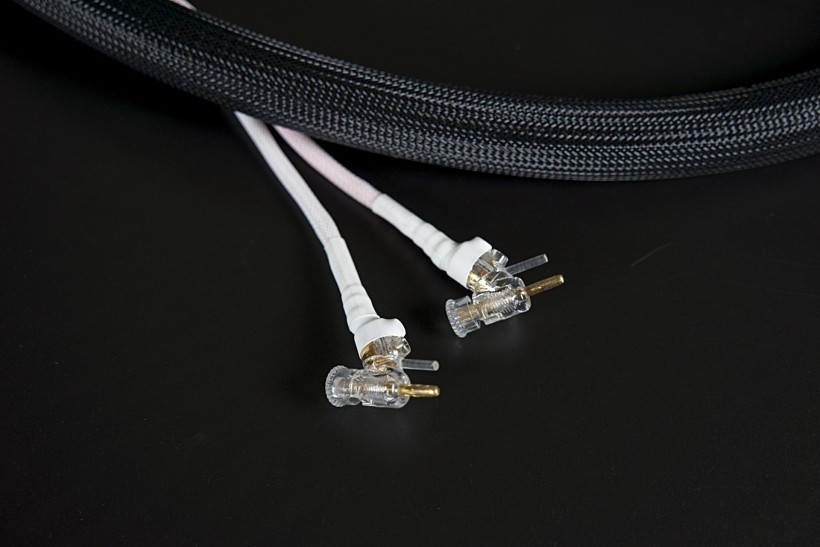
The cables are equipped with a tuned, experimentally developed resonance absorption system, which aims to eliminate magnetic interference generated by the current flowing through them on the one hand, and mechanical interference coming from the environment and disturbing their work on the other. Speaker cables are terminated with the nextgen™ WBT-PlasmaProtect™ 0681 CU spades or 0610 CU bananas. These are characterized by a reduced contact surface to eliminate eddy currents and the so-called mass accumulation effect.
The cables are delivered in an elegant, quite large travel case, also with a unique serial number and certificate of origin. Both, the interconnect and speaker cable are quite thick but also flexible so an installation in a system should be a problem. They are also not as heavy as the thickness suggests, so the sockets one plugs them in should be safe.
Sound
There are people who claim that they can remember in detail the sound of some setup or component even if they listened to it years ago. Research on this kind of memory shows that it is actually short-lasting and that is my experience as well. One may remember some qualities that stood out, but usually, it is not enough for a proper comparison. That is why despite reading my own review of KBL Sound Red Corona (you can find it HERE) or even the original Himalaya (that I reviewed for another magazine several years ago) I won’t offer you any detailed comparison between the two.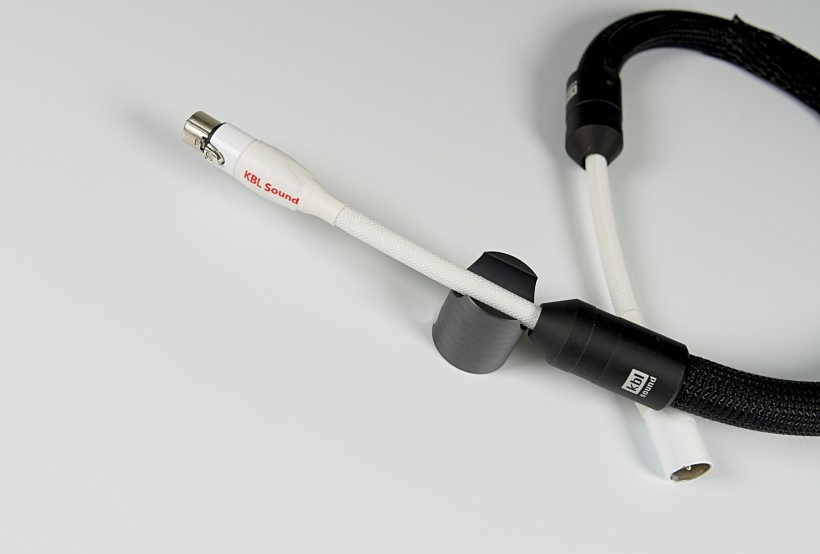
What I do remember about Red Corona is that I liked it a lot, and by a lot, I mean enough to consider it as a permanent addition to my reference system, which says a lot as I am quite picky. It never actually happened (I mean I never acquired Red Corona for my system) as I didn’t need a balanced interconnect at the time, so a way cheaper Zodiac joined my arsenal for rare cases when I had to review some balanced components. The situation changed for me when I added the excellent Circle Labs P300 (preamplifier) and M200 (power amplifier) set (you can find the review HERE) and realized it performed better using a balanced connection. Long story short, it was time to consider adding a high-quality XLR IC to my rig.
The Red Corona cable, as I remember it, presented music in a very natural, engaging way, while offering all the required „audiophile features” that every high-end component must deliver on. Yet, while these made up the core or the foundation of the whole performance, they never seemed to be the attention-grabbers, so to speak, as my focus always stayed on music, performers, and emotions. That’s my personal preference and that’s exactly why I liked Red Corona cables so much, and remembering it I started to seriously consider it next to the recently reviewed Next Level Tech Flame (see HERE) or Soyaton Benchmark (RCA version review can be found HERE counterparts.
I didn’t really consider the original Himalaya as while it offered a classier performance than Red Corona it was also significantly more expensive. Yet, when it came to it Mr. Szczerbowski from KBL Sound proposed their (at the time) top model, Himalaya II XLR IC for review together with speaker cable from the same line. I had to assume it had even more to offer than Red Corona and original Himalaya so I couldn’t resist the temptation of experiencing a performance of supposedly even better cables and based on the experience consider (or not) adding the IC to my setup.
KBL Sound Himalaya II XLR IC
As you’ve already read in the „Design” part, this is the only line in the brand’s offer using silver conductors for the interconnects (speaker and power cables feature copper ones). So it should sound significantly different from all the others, if you believe, that is, that it is the conductor material that influences the sound of a signal cable most. In my experience, it’s the whole design including all the components, and tiny details, that combined result in some particular sonic signature (or, ideally, the lack thereof). The conductor material, while important, in my experience is not the only decisive factor or even not that important one. So let me leave discussions about the advantages of one conductor material over other kinds for others and focus on what I actually heard during my evaluation.
Even though I got the balanced interconnect and speaker cable as a set for this review, I started my evaluation, as I always do, with IC alone to only later add the SC to the mix. Himalaya II XLR initially connected Playback Design MPD-6 and later Weiss Helios DACs with Circle Labs P300 preamplifier. Later I used it between P300 and the same brand’s M200 power amplifier. The two other XLR interconnects at my disposal at the time were KBL Sound’s Zodiac and Soyaton’s Benchmark (that I was only getting to know, although it turned out not to differ much from its RCA sibling that I’d loved and used in my rig for a while already). Speaker cable, when it came to it, replaced my trusted Soyaton Benchmark connecting power amp with interchangeably GrandiNote MACH4, Ubiq Audio Model One Duelund Edition, and finally Joseph Audio Pulsar 2 speakers.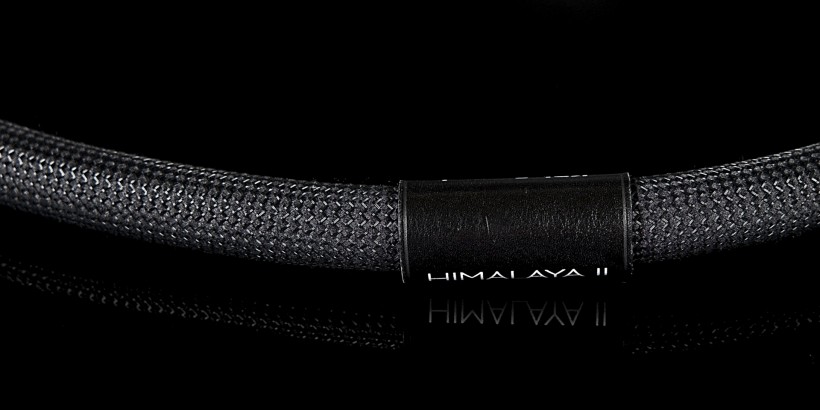
As I’ve already mentioned, Red Corona left quite an impression on me. As I remember my experience with it, it dazzled me right from the start with a very pleasant, listener-friendly, natural, and classy sound. I knew what I was getting with it almost right away. The original Himalaya, when I reviewed it, was compared directly at the time with the twice as expensive top Jorma model and it sounded significantly different. It created large, palpable, somewhat contoured phantom images, brought the foreground closer to me, and filled in the sound a bit better than the Swedish cables. The latter though, seemed even more resolving, offered a deeper soundstage, placed it a bit further away from me, and better conveyed the acoustics of the recording/venue. In the latter regard, Soyaton Benchmark was the one closer to Jorma than the original Himalaya, but the latter still outperformed Red Corona, plus it was more resolving as well.
Now, Himalaya II turns out to be somewhat different from the original and Red Corona in terms of showing its true face right from the start. It becomes clear quite quickly that it will take more time and patience to truly learn what it has to offer. It’s not that Red Corona’s or original Himalaya’s sound was showy or even so distinct as to make a huge and unequivocal first impression, it definitely wasn’t! But in both cases, it was more unambiguous than Himalaya II’s. It turns out that the latter has to be studied, and relished for a while before all the flavors are revealed giving one a chance to fully appreciate it. Having said that, I have to admit that I like Himalaya II right off the bat too! It’s just more of an overall very positive impression, a gut feeling if you will, rather than obvious particular reasons or features of the performance that I could name to prove my point at this stage.
It takes me quite a while to fully appreciate what the tested interconnect has to offer. I feel that I need to emphasize it to you, in case you should try this cable out yourselves. I don’t think you will or can truly appreciate what it has to offer based on a quick listening session or even a fast comparison against some other IC(s). Yes, right from the start it is pretty obvious that it is a refined, classy performer. The sound is smooth, dense, rich, relaxed, well-balanced, and some may even call it dark. The latter, or rather the impression of sound being ‘dark’ is a very good sign in my experience, at least when it comes to components aspiring to the high-end class, yet it may be an argument used against Himalaya II after a short, cursory assessment. That’s what most people would probably say at first after a quick head-to-head against either Flame, Benchmark, or Zodiac. And it would be a mistake.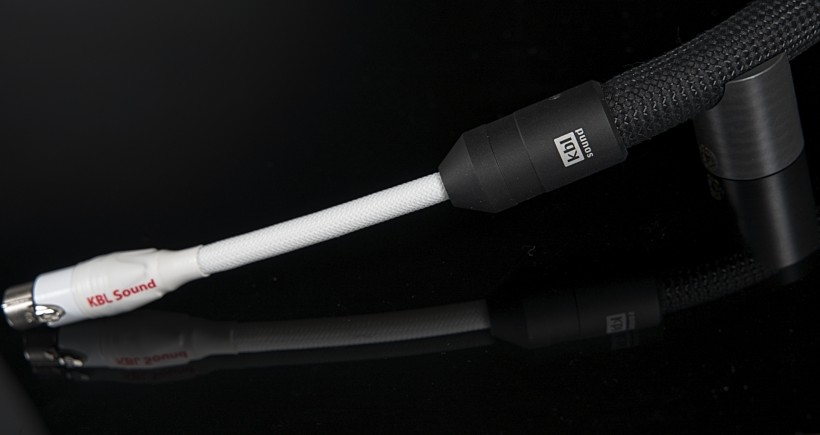
Usually, and this also turns out to be the case, it takes a while and a quality recording, or a few of them, to realize that the sound is actually incredibly resolving and revealing which results in conveying an abundance of information, colors, shades, details and subtleties. Compared to Zodiac it is a completely different beast offering a much richer, much more internally complex, and refined performance, which doesn’t really surprise me considering the price difference between the two. Switching to Himalaya II removes sort of a veil between speakers and listeners as everything, while sounding darker, is actually clearer, more transparent, more open, and more insightful. While I mentioned many times in various reviews that Zodiac offers a better performance than its price tag would suggest, it is still a relatively inexpensive product hence there is only so much it can do.
Himalaya II, on the other hand, was the top achievement of the KBL Sound until recently, hence it is fair to expect a way more sophisticated, and way better performance from it. And it does deliver on that note. It’s also important, and expected, that with Himalaya II this abundance of details is skilfully combined into amazingly coherent, smooth, and so incredibly dense, and rich whole, that it causes that first impression, particularly to inexperienced ears, of a dark, possibly warm sound.
There is some truth to it, to be clear. It actually sounds „darker” than many competitors, including Zodiac (significantly) and Soyaton Benchmark or Next Level Tech Flame (both some), simply because there is more information densely packed in the sound or, in other words, other cables sound a little bit brighter because the density of the information transferred from the source to the target component is not quite as high as with the Himalaya II. So yes, simplifying it, one may say that the former top-of-the-line XLR IC by KBL Sound sounds a bit dark. But it’s a good thing! It ensures the proper richness of the presentation that comes out as natural and highly immersive.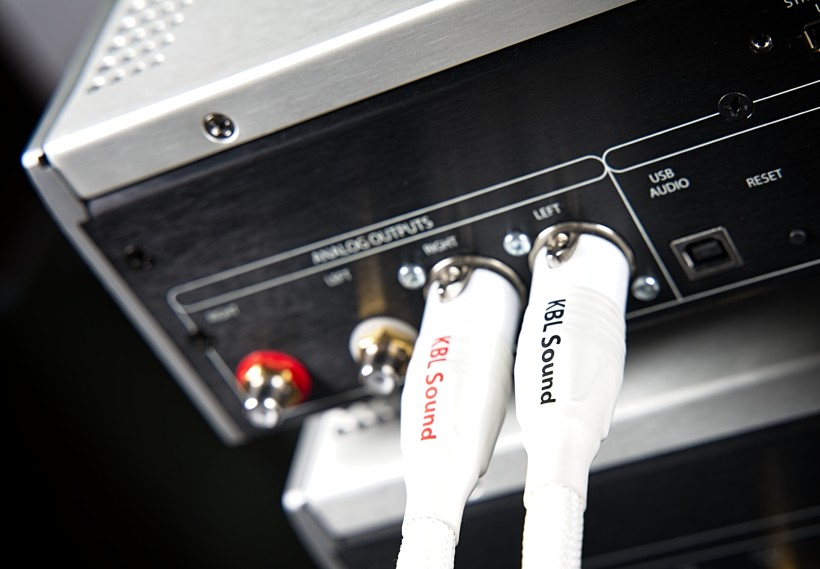
How does it compare to the aforementioned Flame and Benchmark? The former, as I remember it, offers a presentation that is a bit more focused on the dynamics and energy of music, the latter is even more open, more airy, and effortless in its presentation, although not quite as rich, as saturated as the other two. Himalaya II sits somewhere in the middle in terms of character although all in all, it outperforms the other two. It does everything right, and the ultimate result is a good balance of all the aspects of the presentation. The sound is truly dynamic on both, micro and macro levels, and the sudden large dynamic shifts are properly immediate, as Beethoven’s 9th or the soundtrack from the original „Predator” proves beyond any doubt. Compared to the original Himalaya, as I remember it, it improves in terms of spatial aspects of the presentation with a deeper soundstage, that is orderly and nicely layered and there is no feeling of it being pushed forward towards listeners. Also, as was the case between Red Corona and the original Himalaya, the „II” is even more resolving than the latter.
When it comes to powerful performances, whether with acoustic, or electric instruments, one can’t complain about insufficient energy of the presentation. I can clearly hear it with both acoustic and electric bass played by Stanley Clarke on his album, as both deliver even the lowest notes in a weighted, tight, fast way. The acoustic double bass is a bit rounder, softer, and warmer, while the electric counterpart is tighter, and hits with a larger, condensed power. They are different yet both sound as I expect them to, meaning very natural.
The sound with Himalaya II is open and airy, and while not as remarkably spatial as with Benchmark set, it ensures a very natural perception of the events taking place on the stage. One can „watch” them from a certain perspective, being positioned a bit further away than with the original Himalayas. Yet, when it comes particularly to vocal pieces with the vocalist intentionally placed very close to the audience, the tested interconnect perfectly conveys such an intention of a sound engineer.
All the building blocks of the reproduced sound and music are there, and the overall balance comes as close to perfect as possible. Yet, it seems to me that the designer, when voicing Himalaya II XLR interconnect paid particular attention to it conveying the rich, saturated, natural timbre of each instrument in the most realistic hence natural way possible. That is why no matter the music genre, or instrument the tone of each of them is incredibly deep, almost palpable, and amazingly natural.
It seems to me that the tested interconnect was developed not to enhance attack, sustain, or decay phases, not to impress listeners with bass, midrange, or treble, with dynamics, drive, PRAT, space, or energy, although it does it all exceptionally well, but to offer an incredibly realistic, live-like sound of every individual instrument and vocal and then to put all of that together into coherent and highly engaging whole. That’s the very core quality of this model and everything else stems from it. The final result is right there among the very best interconnects I know and most of them cost even more than the reviewed KBL Sound Himalaya II.
It is also true that the sonic signature of the tested interconnects may be surprising to some, as silver is commonly associated with a bright(er), or even a harsh(er) sound than copper, not to mention gold. It may be true in cases of some (relatively) cheap silver cables, and completely wrong when it comes to high-end products. Silver compared to copper reveals a sort of aura surrounding high tones, and adds sparks to metal percussion instruments in a way copper can’t. The whole point of making true high-end silver audio cables is finding proper balance between silver’s unique properties, and what some perceive as its weaknesses or at least as advantages of copper conductors. By now it is already clear to me that the KBL Sound’s team managed to bring out the best in silver conductors in this model, and that its performance speaks for itself. I have no doubts that Himalaya II XLR IC belongs to the high-end category.
KBL Sound Himalaya II XLR IC & speaker cable
It’s time to add the speaker cable to the mix. Interestingly, listening to Renaud Garcia-Fons’ „Arcoluz” I notice, that a glass panel in my room’s door (yes, I know I have to fix it!) now doesn’t react as vigorously to the lowest notes as it did before. So it seems as if the interconnect goes even deeper down the range than the speaker cable. Other than the „rattle” I can’t really tell the difference, because it still seems that the double bass is a properly huge and heavy instrument, that it is (almost) present in my room, that goes down really, really deep. So maybe it’s not really about the maximum extension of the range but rather a specific resonance frequency that the speaker cable limits somehow. I don’t really know, but I figure it is an interesting observation to share.
One of the albums I listen to next is one of the audiophiles’ favorites – Anne-Sophie Mutter’s „Carmen-Fantasie”. With Himalaya II set her violin sounds very deep yet vivid, again due to the abundance of details and subtleties combined into fast, vibrant, rich, and surprisingly (for a stereotypical silver IC cable) sweet whole that is exciting, even breath-taking at times. The flow of music is very natural and the excellent resolution helps with delivering the orchestra’s detailed, well-organized, and powerful performance „behind” the soloist. When needed, Mutter’s violin sounds very gentle and sweet, then turns into this incredibly fast, dynamic, almost (!) aggressive sounding beast, and in both cases, the result is amazingly natural.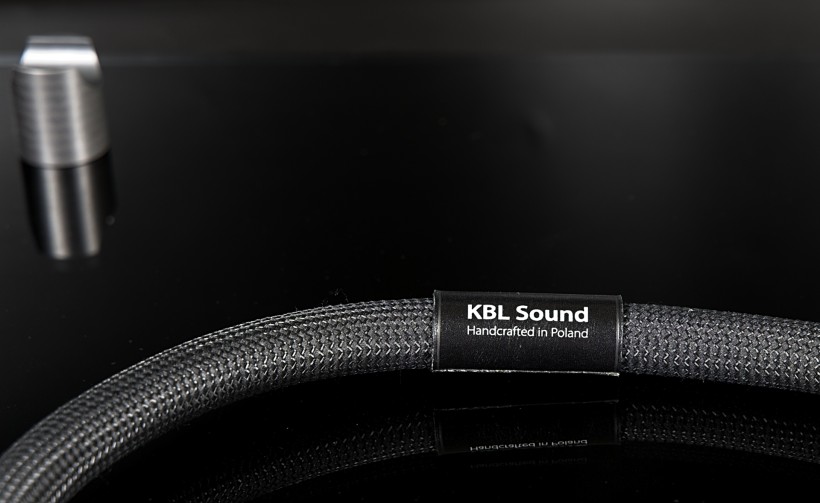
From the start, I told you that the initial perception of the Himalayas II suggests it sounds „dark”. How wrong this impression becomes clear in the first 30 seconds of the famous „Belafonte in Carnegie Hall”. The brass at the very beginning is almost piercing with its fast and sharp attack. To be clear – it sounds very natural, it’s just that not all systems and components are able to present it so realistically. Also, the voice of maestro Belafonte is not only beautifully natural, and rich, but also present and palpable. And he’s funny, hilarious at times which the way Himalaya II set conveys is not only clear but infectious, as I can’t help but laugh at the jokes I heard dozens of times before. I do feel engaged, as the maestro intended, and my room disappears from the picture, I am there, witnessing greatness and enjoying myself.
Apart from this room’s artifact, I’ve mentioned the presentation seems to follow the path laid out by the Himalaya II XLR interconnect. It is well-balanced, coherent, and dynamic, and due to this so realistic timbre of each instrument, and the deepness of their tones, it is truly immersive. It doesn’t really feel like listening to a reproduction of a recording, it becomes something more, much more, a deep, touching experience. It is extended to virtually any album I listen to, although the live ones sound somewhat special with KBL Sound Himalaya II set as the realism, the feeling of being there reaches levels that are usually reserved for much more expensive setups.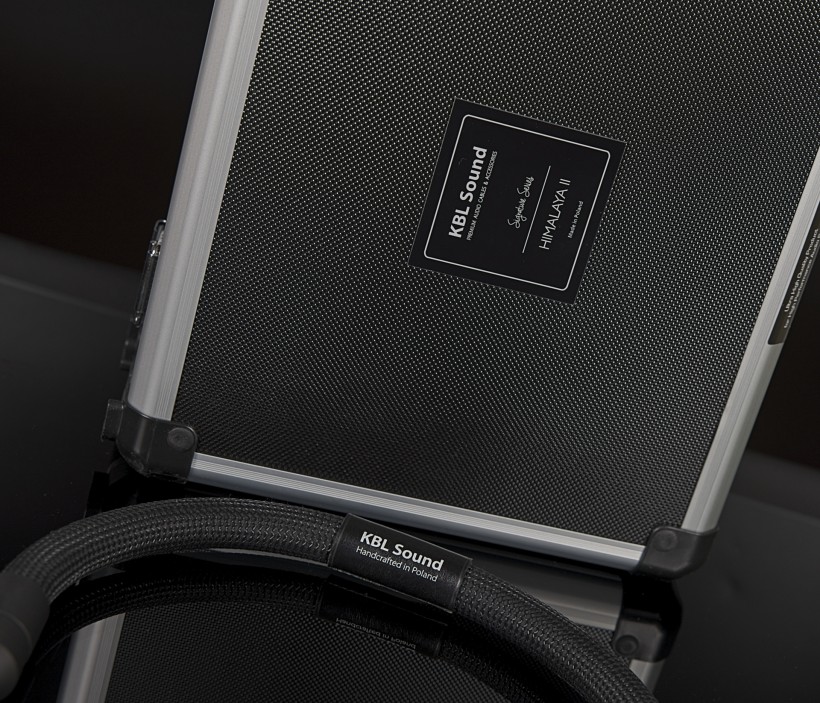
Summary
My search for XLR interconnects is over, as it turns out to be too difficult for me to let the KBL Sound Himalaya II interconnect go. It will become a part of my reference rig from now on despite the significant price difference compared to Red Corona. In some regards such as resolution, spatial aspects of the presentation, and a better insight into the deepest layers of a recording, it outperforms the latter. It is objectively a better cable, I have no doubts about it. So if you can afford it you should go for it although choosing Red Corona will also offer you a highly satisfying musical experience for a much lower price, just not as refined as with Himalaya II.
Yet, it has been something else that convinced me. With KBL Sound Himalaya II the music is more alive, more realistic, more natural, more present, and incredibly immersive. If that’s what you’re after you need to check this cable out (but remember to give it a chance to convince you in a longer than 10-minute long session) before you reach for 2, 3, or even 4 times more expensive competitors. The speaker cables will add even more of all that the interconnect has to offer so you should try it out in your system too for a further enhanced experience. Yet, for me, it is the IC that offers the biggest step forward and the speaker cable just dots the „i” and crosses the „t”. Red Corona, in my opinion, still offers the best price-to-quality ratio, but the Himalaya II goes even further towards unattainable „perfect sound” and the better the setup the more improvement over Red Corona it will offer.
If money is no issue though, remember that there is already a new top-of-the-line Extreme interconnect. Judging by how good the power cable from this line is I can safely guess that it will again outperform Himalaya II by some margin. I hope to find it out myself one day, but for now, the KBL Sound Himalaya II IC + SC set fully deserves our award 
Prices (when reviewed):
- KBL Sound Himalaya II XLR IC 2 x 1m: 5.640 EUR
- KBL Sound Himalaya II speaker cable 2 x 2m: 8.360 EUR
Manufacturer: KBL SOUND
Technical specifications (according to the manufacturer):
XLR IC:
- Conductors: highest purity mono crystal OCC silver, polished by hand
- Gauge 20 AWG, 24 AWG
- Dielectric: air, uncolored Teflon, Kapton, polyolefin
- Wide range shielding: copper, tinned copper
- Termination RCA: WBT 0152 Ag Nextgen Signature
- Termination XLR: Neutrik NC3FXX-WT/NC3MXX-WT
- Phono cables with RCA to RCA (WBT) or RCA to 5 DIN (Cardas) connector to wire up any tonearm
- Standard length: 1 m, 1,5 m
Speaker cable:
- Conductors: highest purity mono crystal OCC copper, size 4.8 mm2 each run
- Insulators: cellular Teflon, Kapton, cotton, air, polypropylene
- Multilayered vibrations damping system
- Termination: spades WBT 0681 Cu nextgen or bananas WBT 0610 Cu, both from the nextgen ™ WBT-PlasmaProtect ™
- Standard length available: 2×2 meters, 2×2.5 m, 2×3 m
Associated equipment:
- Digital source: a custom passive server with WIN10, Roon, Fidelizer Pro 7.10, JCAT NET XE, and JCAT USB XE cards with FERRUM HYPSOS Signature power supply, KECES P8 (mono) linear power supply for the server, JCAT USB Isolator
- D/A Converter: LampizatOr Pacific 2 +Ideon Audio 3R Master Time (USB signal regenerator)
- Analog front end: J.Sikora Standard MAX turntable, J.Sikora KV12 tonearm, J.Sikora KV12 MAX tonearm, AirTight PC-3, phono stages: Grandinote Celio MK IV, ESE Lab Nibiru V 5.
- Power amplifiers: GrandiNote Shinai, Circle Labs M200, Art Audio Symphony II (modified)
- Preamplifier: Circle Labs P300
- Loudspeakers: GrandiNote MACH4, Ubiq Audio Model ONE Duelund Edition.
- Interconnects: Bastanis Imperial x2, Soyaton Benchmark, Hijiri Million, Hijiri HCI-20, TelluriumQ Ultra Black, KBL Sound Zodiac XLR, David Laboga Expression Emerald USB, David Laboga Digital Sound Wave Sapphire Ethernet
- Speaker cables: Soyaton Benchmark
- Power cables: LessLoss DFPC Signature, Gigawatt LC-3
- Power: Gigawatt PF-2 MK2 and Gigawatt PC-3 SE Evo+; a custom power line with Gigawatt LC-Y in-wall cable; Gigawatt G-044 Schuko and Furutech FT-SWS-D (R)
- Network: Silent Angel Bonn N8 + Silent Angel Forester F1 + optical LAN isolator
- Racks: Base VI, Rogoz Audio 3RP3/BBS
- Anti-vibration accessories: ROGOZ-AUDIO SMO40 and CPPB16 platforms and ROGOZ AUDIO BW40MKII feet, Franc Accessories Ceramic Disc Slim Feet and Wood Block Platform, Graphite Audio CIS-35 and IC-35


